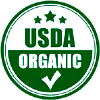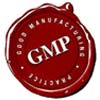Quick Facts
Product Name: Iso Eugenol
Chemical Name: 2-methoxy-4-propenylphenol
Mol. Formula:CH3OC6H3(CH=CHCH3)OH
Mol. Weight:164.2
Specific Gravity: 1.079 to 1.087 At 25 0C
Appearance: Liquid with pale yellow
Odor: A Fine Clove Odor
Color: Pale Yellow
Refractive Index: 1.572 to 1.578 At 200C
GLC Purity In %: Cis Isomer 5- 15% (5.3 %), Trans Isomer 85- 95% (94.4 %), Sum Isomer (99.7 %)
Iso-eugenol is an essential oil separated from the tree ylang-ylang. The biological name of ylang-ylang is cananga odorata and it exists in trans and cis isomeric forms. The acetate ester of iso-eugenol can be used to prepare vanillin. The first isomerisation of eugenol was supposed to be by two German research groups in the year 1891. Iso-eugenol is used as a flavour component of the nutmeg in the pumpkin pie usually consumed on Thanksgiving. The isomer eugenol is a flavour of component of clove. Iso-eugenol is a phenylpropene which is propenyl substituted guaiacol. For some, long term exposure to iso-eugenol means a hives like reaction and it can be identified by doing a clinical patch test. It is widely used as a fragrance material in soaps, shampoos and detergents
Extraction
Iso-eugenol is extracted from calamus, savory, basil, clove, jonquil, nutmeg, sandalwood, dill seed, gardenia, mace, petunia and many other flowers. It can also be produced by isomerisation of eugenol which happens naturally in clove, pimento, bay leaf and cinnamon. As flavouring agent, iso-eugenol is added to non-alcoholic drinks, baked foods and chewing gums. Being a flavouring agent, Iso-eugenol is present in beer, roasted coffee, nutmeg and smoked fish. This substance is not used in medicines used for human beings. In veterinary science it is used for sedation or anaesthesia of salmon and Rainbow trout in the regular husbandry operations like grading, vaccination and brood stock transportation. Exposure to iso-eugenol holds back the respiratory activities characterized by undetectable opercula movement.
Used in Moderation
Iso-eugenol is a chemically transformed form of Eugenol which is formed by heating Eugenol and changing its composition. As per studies, Iso-eugenol can be used in moderation as an acceptable ingredient. It may have diverse side effects if used in overdose including contacting dermatitis. It is highly volatile and it is not good for use for pregnant women. Iso-eugenol has strong antimicrobial activities but the antibacterial action is less. As per studies, Iso-eugenol shows a bactericidal activity against E.coli and L.innocua which did not affect cell morphology even though the cell membrane was permeabilized. Iso-eugenol has interaction with giant unilamellar vesicles which clearly indicates its increased membrane fluidity and non-disruptive permeabilization mechanism






